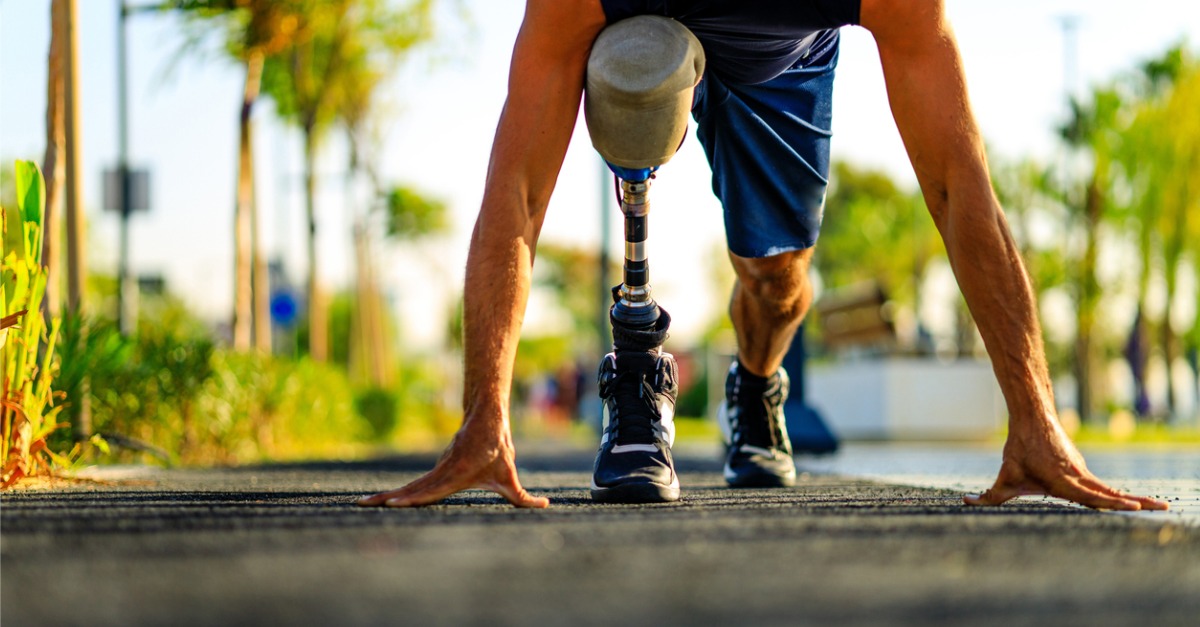Prosthetic therapy is a specialized type of physical therapy that helps rehabilitate patients who have received a prosthesis to replace a lost limb. Growing accustomed to a prosthesis can be challenging — it’s a major life change — which is why it’s critically important for patients to have support through every step.
Challenges that come with loss of a limb and adjusting to a new prosthesis include excessive sweating (which can prevent a proper fit), as well as phantom limb pain and weakness in the residual limb. In some cases, the residual limb may also change shape within the first year after amputation as the tissue heals.
Here are some of the goals of prosthetic therapy and what to expect if you’ll be starting sessions.
What’s Covered in Prosthetic Therapy?
Adjusting the New Prosthesis to You
Prosthetic therapists help you avoid discomfort by finding ways to prevent friction between the prosthetic and your residual limb, and ensuring a proper fit.
Recent advances give therapists more options to leverage evolving prosthetic limb technology. For example, there are various specialized prostheses available for different activities, including exercising and showering.
Your therapist can work with your prosthetist to find the best solutions, making your adjustment as smooth as possible, while allowing you to return to the activities most important to you. When needed, they can also help you adjust a new prosthesis that replaces an old one.
Helping You Adjust to the New Prosthesis
Learning to move with a prosthetic limb isn’t easy. Following a leg amputation, for instance, many people experience a shifted center of gravity. After surgery, you may get used to this “new normal,” but then you have to reorient to balancing yourself once you receive your prosthetic leg.
Prosthetic therapists help patients navigate these challenges through guided exercises, so that you can move safely and efficiently throughout your normal activities. Your prosthetic therapist can also address phantom limb pain with approaches such as mirror therapy, during which you perform exercises while looking in the mirror.
Building Strength
To use a prosthesis in a way that’s effective for completing everyday tasks, you’ll need enough strength in any residual limb and throughout that side of your body. One goal of prosthetic therapy is therefore building strength with targeted exercises that will help you regain the muscle mass needed to easily move about your life with your new prosthesis.
Restoring Quality of Life
One final goal of prosthetic therapy is restoring your quality of life to a point as close as possible to that which you enjoyed before amputation. Depending on what you’re struggling with, your prosthetic therapist may help you relearn to complete routine tasks like walking, getting dressed, bathing, preparing meals, and driving. This may involve rebuilding motor and occupational skills using assistive devices, targeted exercises, and other forms of therapy.
The prosthetic and medical team at Vascular Surgical Associates is committed to staying at the forefront of new developments in prosthetic technology and care. Our outcome-based Total Prosthetic Care Plan offers the highest level of prosthetic expertise, designed to fit the unique needs of each individual. View a list of our locations online, and then schedule an appointment by calling 770-423-0595.





